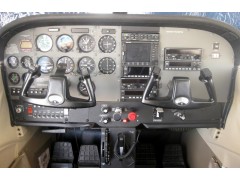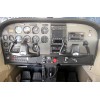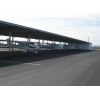Safety
By its very nature, simulator training is safer than aircraft training.
Abnormal and emergency procedures may be learned and practiced without risk to students, staff or aircraft.
Severe weather, terrain or obstruction conflicts can be demonstrated in the simulator without the risk of exposure to the actual condition.
In-Flight Failures
In-flight failures of systems and instruments can be created as the failure would occur in the airplane. Instruments do not fail instantly, as is the case when the instructor covers an instrument. You can see what really happens — and be ready for it.
If you want to fail a glide slope just after course interception, it’s easy to do.
You can create pitot ice, carburetor ice and electrical failures.
In-Flight Weather
If you feel the need to create a 15-knot crosswind on a VOR or ILS approach, it’s no problem.
Create turbulence to see how your flying changes.
Training Value
A flight simulator makes a more suitable learning environment than the cockpit of an airplane. It enables the student and the instructor to concentrate on the learning task.
There is less noise in the simulator, allowing more effective communications between the student and the instructor.
Temperature and humidity are controlled, making a more comfortable environment.
Simulators save time — there is no need to start the aircraft, warm it up or fly to the training area — there are no delays caused by actual clouds or bad weather conditions.
Any topic or maneuver can be dealt with by freezing the simulator for discussion or evaluation purposes, and specific lessons can be practiced many times in a short period of time.
The FAA allows considerable amounts of simulator time toward certificates.
Students gain first-hand experience with navigation facilities that might not be available locally.
Finally, when used correctly in training programs, simulators reduce total training time. One hour of simulator time can yield the same results as two or more hours of training in the actual airplane.












